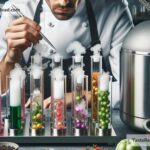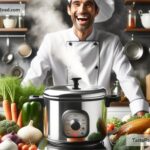The Science of Cooking with Physical Science: Techniques and Tips
Cooking is an everyday activity for many of us, but do you ever stop and wonder what’s really happening when food transforms from raw ingredients into delicious meals? The answer lies in science—specifically, physical science! By understanding basic principles like heat transfer, chemical reactions, and states of matter, you can elevate your cooking and make food that’s not only tasty but also consistently great. In this blog, we’ll explore some simple techniques and tips rooted in physical science to help you make better decisions in the kitchen.
What is Physical Science in Cooking?
Physical science is the study of matter and energy, including concepts like heat, temperature, pressure, and states of matter (solid, liquid, gas). In cooking, these principles play a huge role in how ingredients change and react during preparation. Whether we’re boiling water, baking bread, or searing steak, we’re applying physical science without even realizing it.
Think of cooking as a series of experiments. You combine ingredients, apply energy (through heat, cold, or motion), and watch them transform into something new. Understanding why these changes happen can help you cook smarter and troubleshoot when things don’t go as planned.
Heat Transfer—The Energy Behind Cooking
Heat transfer is a key concept in physical science and is central to cooking. When we cook food, we use heat to change its texture, flavor, and appearance. There are three main ways heat is transferred: conduction, convection, and radiation.
-
Conduction:
This is the transfer of heat through direct contact. For example, when you’re frying an egg in a pan, the heat moves from the pan to the egg. To cook food evenly, make sure your pan is properly preheated. Use low-to-medium heat to avoid burning the outside before the inside cooks. -
Convection:
Convection occurs when heat is transferred through a fluid, such as air or water. This happens when boiling water or baking food in the oven. In the oven, hot air moves around the food, cooking it from all sides. To get evenly baked cookies, set your oven to the right temperature and use a fan-based convection setting, if available. -
Radiation:
Radiation transfers heat through waves of energy. Think of grilling or broiling, where the food is cooked by infrared heat from a flame or heating element. To grill food perfectly, place your ingredients at the right distance from the heat source—a little too close, and it might burn; too far, and it may take too long to cook.
The Science of Boiling and Freezing: States of Matter
Cooking often involves changing the state of matter—turning solids into liquids, or liquids into gases. One common example is boiling water. When you heat water, its molecules move faster, eventually breaking free into steam, which is water in its gaseous state.
Similarly, freezing slows down molecular motion, turning liquids into solids. For example, we freeze ice cream to solidify the fat, water, and sugar into a creamy texture. But if the freezer temperature isn’t cold enough, ice crystals can form, making your ice cream crunchy instead of smooth.
Tip: When boiling or freezing, timing, and temperature are everything. Use a thermometer for precise results when making candy, boiling pasta, or freezing sorbets.
Chemical Reactions in Cooking: Making Flavors and Textures
Cooking isn’t just about heating food—it’s also about creating chemical reactions that transform how food tastes and feels. Two of the most notable cooking reactions are caramelization and the Maillard reaction.
-
Caramelization:
When sugar is exposed to heat, it breaks down and forms new compounds, giving food a sweet, nutty flavor. This is what happens when you make caramel or brown onions. Slow, steady heat helps you control caramelization and avoid burning the sugar. -
Maillard Reaction:
This reaction occurs when proteins and sugars in food react under high heat, creating rich, savory flavors and brown color. It’s why grilled meats, roasted vegetables, and toasted bread taste so delicious. To maximize the Maillard reaction, make sure your food is dry before cooking (pat meat with paper towels), and use high heat for a short period.
Using Pressure: Cooking Faster with Science
Pressure cooking is another great example of physical science in action. By trapping steam inside a sealed pot, pressure cookers increase the boiling point of water. This higher temperature cooks food faster, allowing soups, beans, and tough cuts of meat to soften in a fraction of the time.
Tip: Always follow safety guidelines when using a pressure cooker, and don’t overfill it so you don’t risk spilling or clogging.
Measuring and Mixing: Physics at Play
Even simple tasks like measuring ingredients and mixing them involve science. Measuring accurately ensures chemical reactions occur in the right proportions, while mixing evenly distributes molecules, helping your dish cook consistently.
For example:
– Use a scale for exact measurements, especially in baking, where precision matters.
– Mix gently for fluffy cakes or vigorously for chewy bread, depending on the desired texture.
Cooking Smarter with Science
Understanding physical science doesn’t mean you have to memorize equations or study textbooks—it’s about observing how heat, pressure, and chemical reactions change your food.
By applying principles like heat transfer, states of matter, and chemical reactions, you can make smarter choices in the kitchen, troubleshoot problems, and even experiment with new techniques. Cooking isn’t just an art; it’s a science that can lead to delicious discoveries.
So the next time you cook, pay attention to the transformations happening along the way. Who knows—your kitchen could become your favorite science lab!
Happy cooking!


